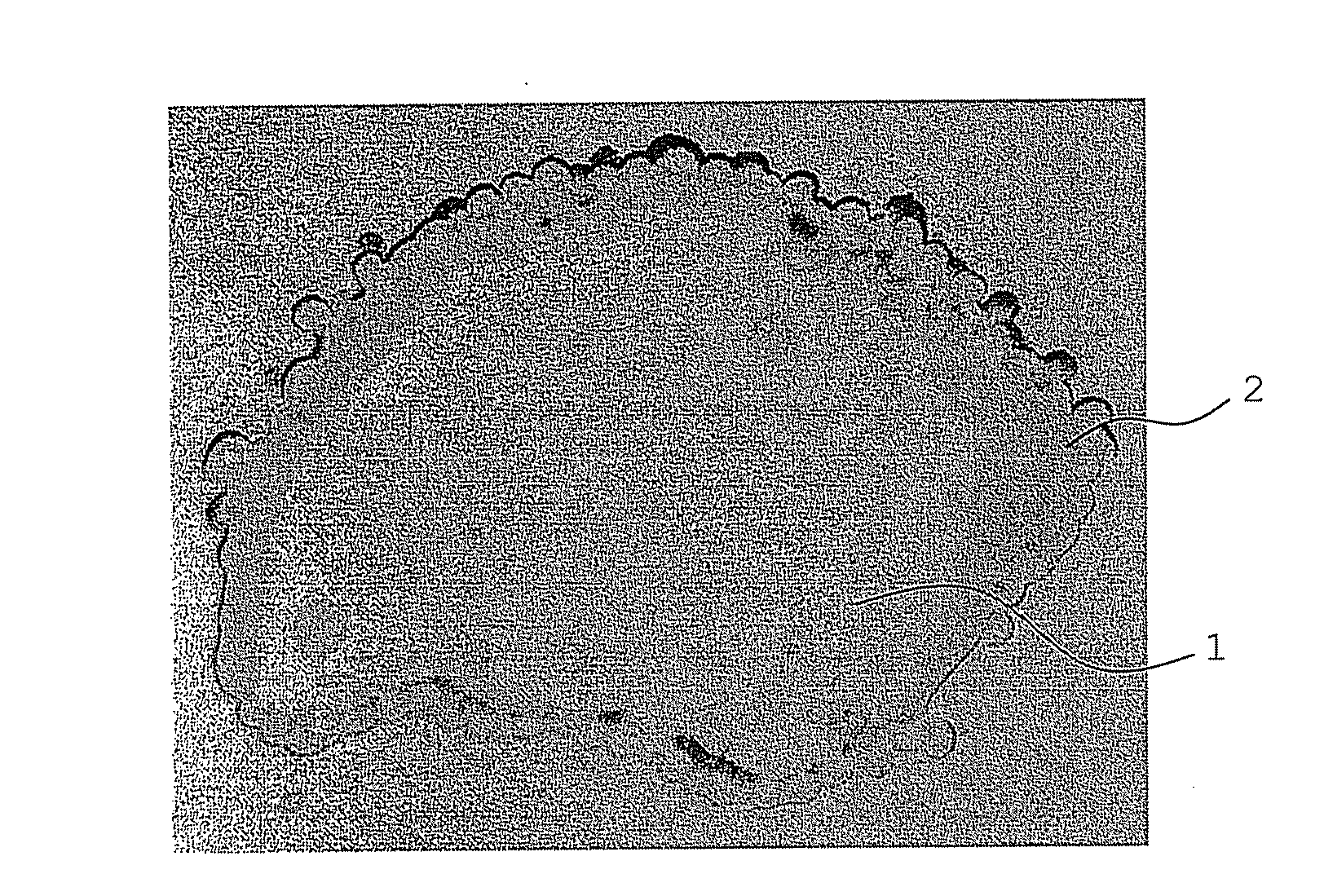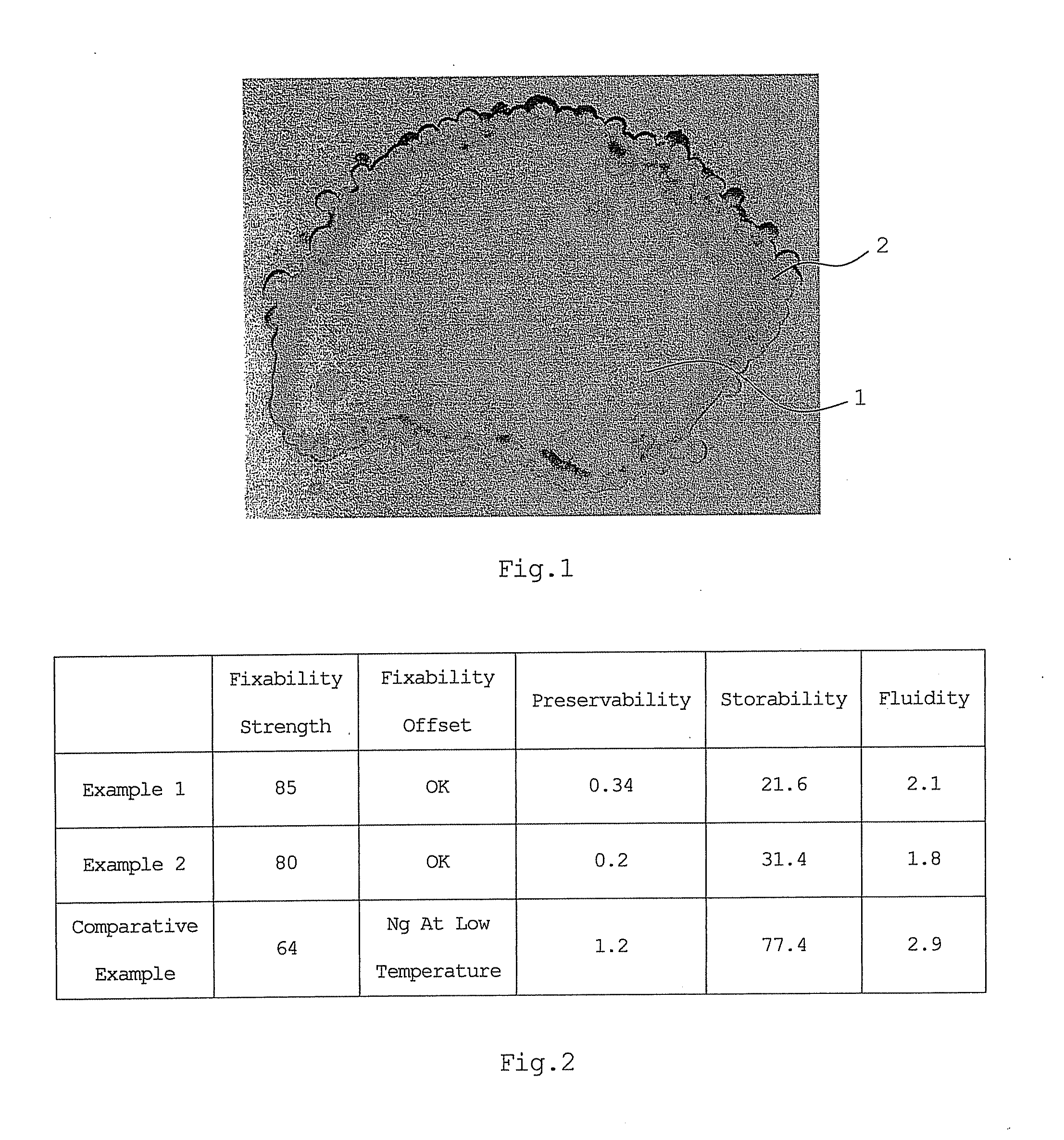Developing agent and manufacturing method thereof
a technology of developing agent and manufacturing method, which is applied in the field of developing agent, can solve the problems of difficult control of the distribution of resin phases, difficult to form a toner containing a polyester resin as a binder by a polymerization method, and low glass transition point limit, so as to improve the low-temperature fixability and a manufacturing method
- Summary
- Abstract
- Description
- Claims
- Application Information
AI Technical Summary
Benefits of technology
Problems solved by technology
Method used
Image
Examples
example 1
[0053]An aqueous solvent which had been prepared by adding, as a dispersion stabilizer, 5 wt % of magnesium pyrophosphate obtained by a double decomposition method in 200 part of water was added in a separable flask. 0.01 wt % of sodium lauryl sulfate and 0.02 wt % of sodium nitrite were then dissolved as surfactants in the aqueous solvent.
[0054]Separately, an organic solvent was formed of 22 wt % of methyl methacrylate (SP value: 9,7, SP value of polymer: 9.1) as an acrylic monomer, 50 wt % of styrene as a monomer copolymerizable therewith and 8 wt % of γ-methacryloxypropyltrimethoxysilane as a crosslinkable monomer; and 20 wt % of a polyester resin (VYLON® 200, manufactured by Toyobo Co., Ltd.) (SP value: 10.1) as a soluble resin, 0.5 wt % of 2,2′-azobis(2,4-dimethylvaleronitrile) as a polymerization initiator, 5 wt % of lauric acid as a surfactant, 10 wt % of carbon black as a black pigment, 1 wt % of a zirconium monoazo dye-containing charge inhibitor, and 4 wt % of a rice wax a...
example 2
[0058]A toner particle was formed under the same condition as in Example 1, except for using 50 wt % of allyl methacrylate in place of 8 wt % of γ-methacryl-oxypropyltrimethoxysilane and changing the amount of lauric acid from 5 wt % to 0.1 wt %.
[0059]The formed toner particle was evaluated in the same manner as in Example 1. As a result, the toner particle was a substantially spherical particle having a volume average particle size of 6.5 μm and having concaves and convexes on its surface.
PUM
| Property | Measurement | Unit |
|---|---|---|
| wt % | aaaaa | aaaaa |
| crosslinkable | aaaaa | aaaaa |
| soluble | aaaaa | aaaaa |
Abstract
Description
Claims
Application Information
 Login to View More
Login to View More - R&D
- Intellectual Property
- Life Sciences
- Materials
- Tech Scout
- Unparalleled Data Quality
- Higher Quality Content
- 60% Fewer Hallucinations
Browse by: Latest US Patents, China's latest patents, Technical Efficacy Thesaurus, Application Domain, Technology Topic, Popular Technical Reports.
© 2025 PatSnap. All rights reserved.Legal|Privacy policy|Modern Slavery Act Transparency Statement|Sitemap|About US| Contact US: help@patsnap.com


